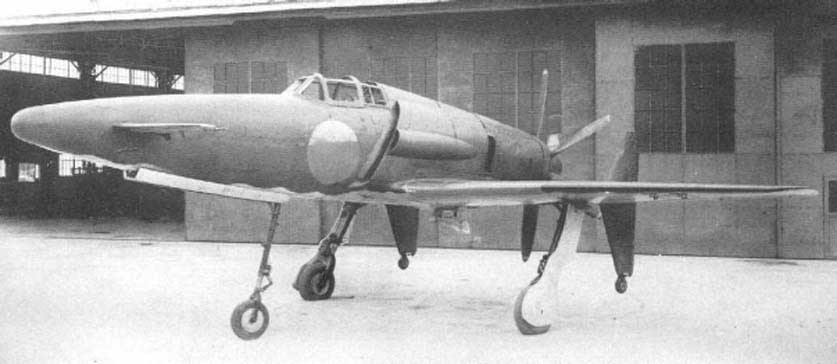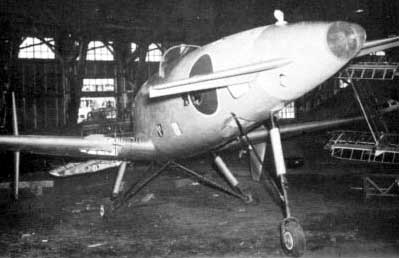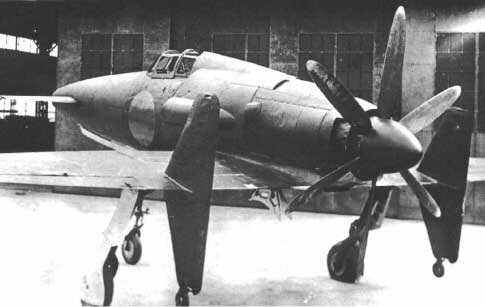

|
The uniquely different "Shinden" was the brainchild of Captain Massaoki Tsuruno around the beginning of 1943. From the outset the "Shinden" was conceived in such away that it could be fitted with a turbojet engine as soon as one became available with out any delay in production. Captain Tsuruno put his idea to the First Naval Air Technical Arsenal (Dai-Ichi Kaigun Koku Gijitsusho) in April 1943, who were impressed enough to have some exploratory work done to see if Captain Tsuruno airplane had any merit. This resulted in three gliders (MXY6) being built to test Tsuruno's design in flight, with one of the gliders being fitted with a 22 hp Ha-90 4 cylinder air cooled engine. The feasibility of the canard design was proven by the end of 1943. The Navy were so impressed by the flight testing, that they instructed the Kyushu Aircraft Company to design a canard interceptor around Captain Tsuruno concept (with Tsuruno leading a team from the Dai-Ichi Kaigun Koku Gijitsusho assigned to aid Kyushu's design works). |
 One of the MXY6 gliders |

|
The construction of the first two prototypes started in June 1944, with the first aircraft being completed in April of 1945, but because of the unavailability of some parts and difficulties with the piston engine's cooling in ground testing the first flight of the Shinden was not made until 3/8/1945, when Captain Tsurno took to the air at Fukuoka Airport. All in all the total flying time made by the Shinden was 45 minutes by the end of the war. However even before the first prototype took to the air, the Navy ordered the J7W1 into production, with quotas of 30 Shindens a month given to Kyushu's Zasshonokuma factory and 120 from Nakajima's Handa plant. Given the situation of the war at the start of 1945 it was never going to be possible to obtain this goal, in fact only two aircraft were ever completed. After the end of the war the second prototype was shipped to the USA, with the first being scraped. |